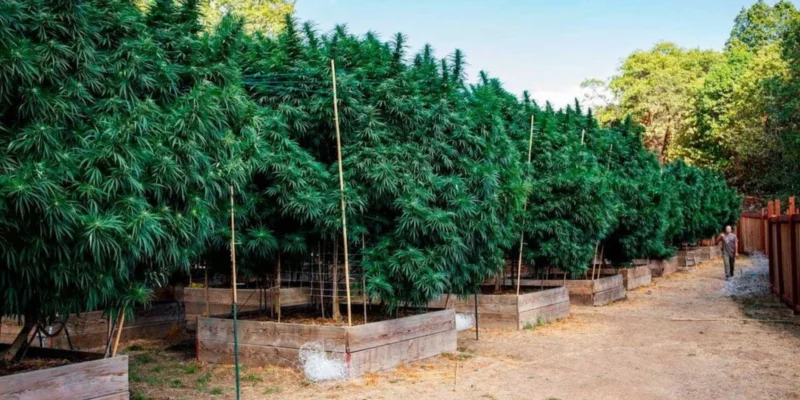Outdoor Grow cultivation is a time-honored tradition that connects growers to the natural elements and harnesses the power of the sun. This traditional method of growing cannabis has seen a resurgence in popularity, thanks to the expanding legalization of cannabis across the globe. In this article, we will delve deep into the world of outdoor cultivation, exploring its benefits, site selection, strain considerations, cultivation techniques, pest management, and the harmony between cannabis and nature.
The Advantages of Outdoor Grow
Outdoor cultivation offers several distinct advantages for cannabis growers. The most notable advantage is the abundant natural light provided by the sun, which results in vigorous plant growth and robust cannabinoid and terpene production. Additionally, outdoor cultivation reduces energy costs and the environmental impact associated with indoor growing, making it a more sustainable choice. The expansive space allows for larger plant sizes and the potential for higher yields.
Site Selection and Preparation
Selecting the right site for outdoor cultivation is crucial for successful crop production. Factors such as sunlight exposure, soil quality, drainage, wind protection, and security need to be considered. South-facing slopes with well-drained soil and good air circulation are often preferred. Preparing the site involves clearing the area of debris, removing weeds, amending the soil with organic matter, and ensuring proper irrigation infrastructure.
Strain Selection for Outdoor Cultivation
Choosing the appropriate cannabis strains for outdoor cultivation is key to optimizing yields and quality. Considerations include regional climate, disease resistance, pest tolerance, flowering time, and desired cannabinoid profiles. Hardy and resilient strains, such as certain indica or hybrid varieties, tend to perform well in diverse outdoor conditions. Consulting with local growers or breeders can provide valuable insights into strain selection specific to your geographic area.
Cultivation Techniques
Successful Outdoor Grow requires employing effective cultivation techniques. These include companion planting, trellising, pruning, and proper nutrient management. Companion planting involves growing complementary plants alongside cannabis to repel pests or attract beneficial insects. Trellising and pruning help to manage plant size, enhance airflow, and promote even light distribution. Utilizing organic and slow-release fertilizers ensures a steady supply of nutrients throughout the growing season.
Watering and Irrigation
Providing adequate water and irrigation is critical for healthy plant development. Cannabis plants generally require regular watering, especially during hot and dry periods. Drip irrigation systems, soaker hoses, or overhead sprinklers can be used to deliver water efficiently. Monitoring soil moisture levels and adjusting irrigation schedules accordingly help prevent over or under-watering, which can lead to plant stress or root-related issues.
Integrated Pest Management (IPM)
Implementing effective pest management strategies is essential for outdoor cultivation. Integrated Pest Management (IPM) combines preventive measures, biological controls, and judicious use of organic pesticides to manage pests effectively. Regular scouting, maintaining a clean growing environment, using beneficial insects, and employing physical barriers can help prevent pest infestations. Organic pesticides, such as neem oil or insecticidal soaps, can be used as a last resort when necessary.
Environmental Factors and Seasonal Considerations
Outdoor Grow is subject to the influence of environmental factors and seasonal changes. Understanding local climate patterns, temperature fluctuations, rainfall, and the photoperiod is crucial for successful cultivation. Adjusting planting schedules, selecting strains suitable for the local climate, and providing additional protection during adverse weather conditions help mitigate potential risks.
Harvesting and Curing
Timing the harvest correctly is crucial for optimal potency and flavor. Monitoring trichome development and observing strain-specific harvest guidelines will help determine the ideal time for harvesting. After harvest, the curing process plays a vital role in enhancing the final product’s aroma, potency, and overall quality. Proper drying and curing techniques involve hanging trimmed branches in a controlled environment with adequate airflow and monitoring humidity levels.
Conclusion
Outdoor cannabis cultivation represents a timeless relationship between growers, the plant, and the natural world. Embracing the art and science of Outdoor Grow allows cultivators to harness the power of the sun, maximize yields, and produce high-quality cannabis. By selecting suitable strains, implementing effective cultivation techniques, managing pests, and understanding environmental factors, growers can unlock the full potential of outdoor cultivation and nurture a profound connection with nature.


